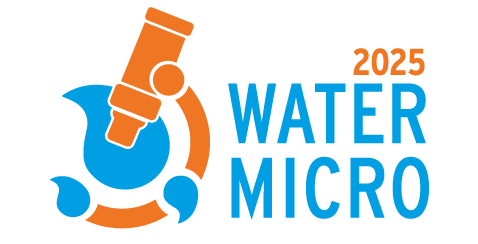David McCarthy1, Gertjan Medema2, Ana-Maria de Roda Husman3
1University of Guelph, Guelph, Canada. 2TU Delft, Delft, Canada. 3RIVM, Utrecht, Netherlands
Introduction: This side event focuses on innovative sampling techniques for wastewater, stormwater, and receiving water bodies, with a particular emphasis on wastewater-based epidemiology (WBE) and microbial monitoring. Recent global events, including the COVID-19 pandemic and emerging threats like MPOX and avian influenza, have highlighted the critical role the water surveillance and WBE in improving public health outcomes. As demonstrated in recent studies, novel sampling methods like passive samplers have shown great potential in detecting pathogens in water systems.
This side event aims to explore these emerging sampling technologies and their applications across various water matrices, with special attention to developing accessible, cost-effective, and accurate methods suitable for resource-limited settings. We will discuss the challenges and opportunities in creating more sensitive and representative sampling methods, particularly for low-prevalence settings and informal settlements.
The side event is designed to bring together diverse backgrounds to share knowledge on recent advancements and to strategize on future sampling innovations that can address current and emerging global health challenges. We aim to improve how appropriate sampling fosters our understanding of microbial dynamics in water systems and enhance early warning capabilities for disease outbreaks worldwide.
Objectives:
- Explore innovative sampling techniques for wastewater, stormwater, and receiving water bodies, with a focus on wastewater-based epidemiology and microbial monitoring.
- Discuss the challenges and limitations of current sampling methods and identify areas for improvement, particularly in resource-limited settings.
- Examine case studies of novel sampling applications, including passive samplers for pathogen detection in wastewater.
- Evaluate the need for validation and standardization of new sampling techniques, especially for quantitative analysis in WBE.
- Brainstorm future directions for sampling innovation to address emerging and potential future public health challenges, such as antimicrobial resistance, MPOX and avian influenza.
- Identify strategies for developing accessible, cost-effective, and accurate sampling methods suitable for diverse global contexts, including informal settlements.
- Foster collaboration and knowledge exchange among participants from diverse backgrounds and career stages.
- Identify research gaps and potential funding opportunities for developing and implementing new sampling methods in WBE and beyond.
Methodology/Format: The side event will employ a highly interactive format to engage participants and encourage knowledge sharing:
- Opening Plenary (10 minutes): Brief introduction to the side event topic and objectives. Overview of current challenges in water sampling, with emphasis on WBE applications and emerging global health threats
- Lightning Talks (20 minutes): 5-minute presentations on innovative sampling ideas from selected participants. Topics may include passive samplers, in-situ monitoring devices, and sampling methods suitable for resource-limited settings.
- Interactive Breakout Sessions (30 minutes): Participants will be divided into small groups (15-20 people). Groups will focus on specific themes: WBE sampling innovations, sampling in resource-limited settings, emerging pathogen detection, and quantification challenges, etc. Groups will use Miro boards to brainstorm sampling needs, challenges, and potential solutions
- Gallery Walk (15 minutes): Groups will rotate to view and comment on other groups’ Miro boards. Participants will use digital sticky notes to add ideas and questions
Closing Plenary (15 minutes): Summary of key takeaways. Discussion of next steps and potential collaborations. Throughout the side event, we will use Mentimeter for quick polls and feedback to maintain engagement and adapt the discussion as needed.
Expected outcome: The side event aims to produce the following tangible outcomes:
- A list of innovative sampling ideas and experiences for wastewater (including WBE applications), stormwater, and receiving water bodies, with special attention to methods suitable for resource-limited settings.
- Identification of key research gaps and priorities for future development in water sampling techniques, particularly for pathogen detection and quantification in diverse global contexts.
- A roadmap for developing sampling methods to address current and emerging public health challenges, such as AMR, MPOX and avian influenza.
- A collaborative network of researchers and practitioners interested in advancing water sampling methodologies for WBE and beyond, with emphasis on global inclusivity.
- Identification of potential funding sources and research partnerships for developing and validating new sampling techniques in WBE and other water quality applications, with a focus on projects benefiting underserved communities.
